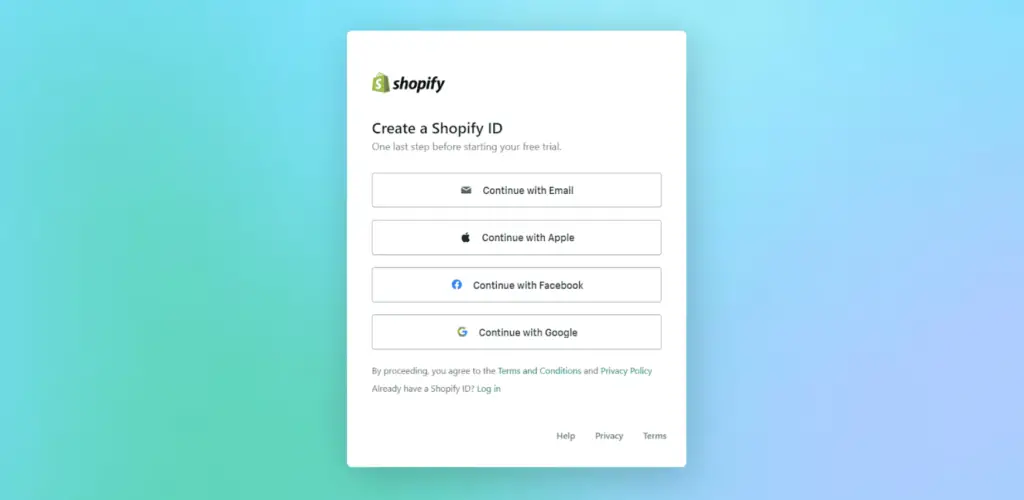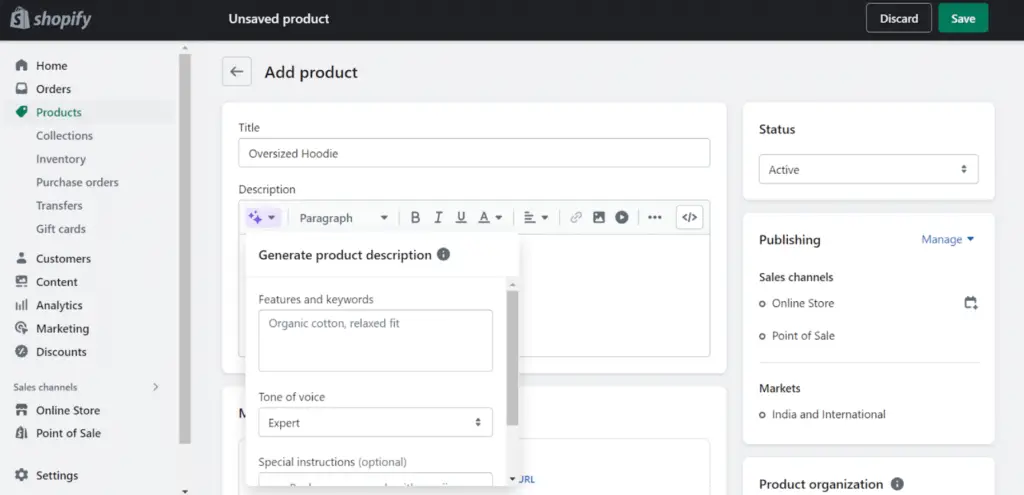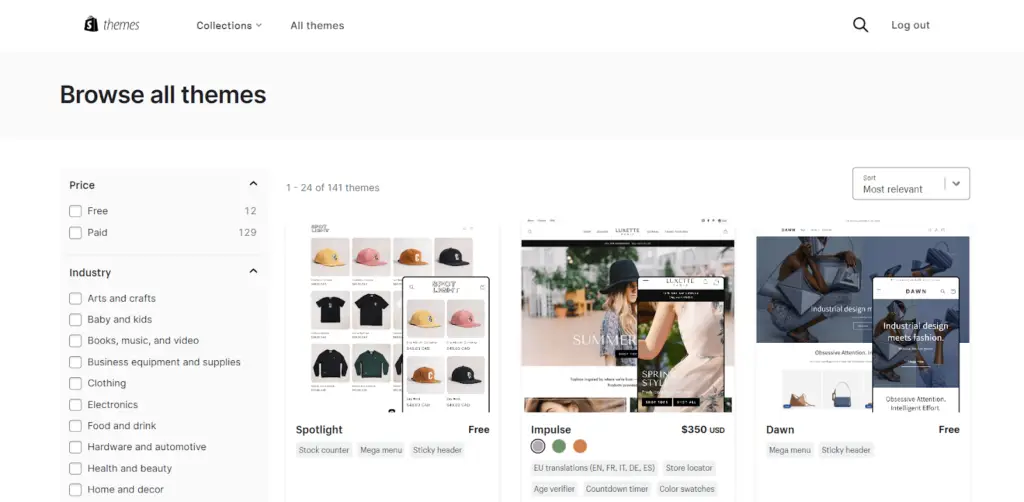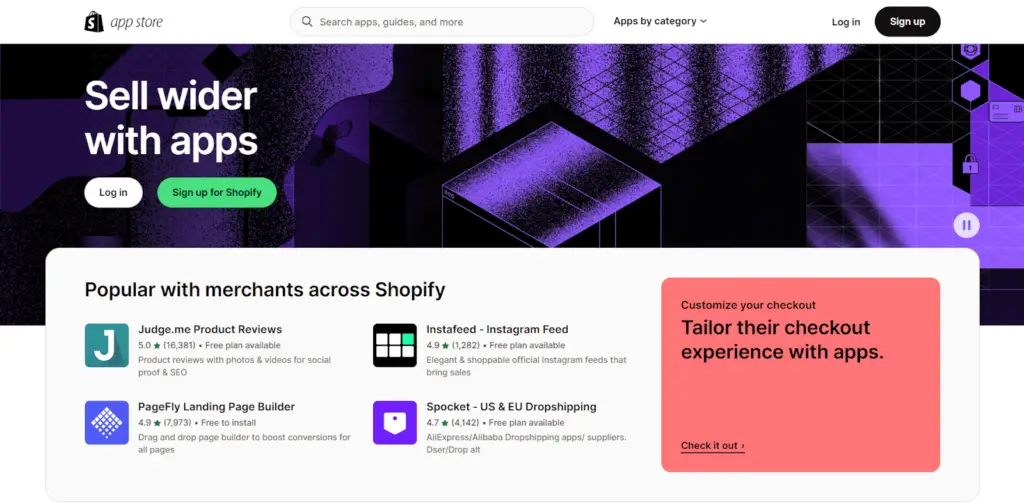Building an online store on Shopify can be quite a demanding endeavor, and through my extensive experience with multiple Shopify stores, I’ve learned just how complex it can be to get everything right before hitting that all-important launch button.
To facilitate a successful launch, I’ve compiled an exhaustive Shopify Launch Checklist that serves as a systematic guide, ensuring every crucial aspect is covered before introducing your store to the public.
Shopify Pre-Launch Checklist: Essential Overview
Prior to diving into the detailed checklist, here’s a condensed summary of the pivotal steps that should be addressed before launching your Shopify store:
- Choose an exclusive domain name and design your store by selecting and personalizing a theme that represents your brand identity.
- Upload high-quality product images, create informative descriptions, and set precise pricing and inventory levels.
- Configure your preferred payment providers and determine shipping rates to guarantee seamless transactions.
- Draft and display critical policies such as Terms of Service, Privacy Policy, and Return Policy to foster trust among customers.
- Execute basic SEO techniques such as incorporating meta titles and descriptions for enhanced online visibility.
- Install essential apps for analytics, email marketing, and other functionalities to amplify your store’s performance.
- Conduct thorough testing of the store’s operations, including processing test orders and verifying email notifications.
- Establish clear communication channels for customer inquiries and support to ensure a satisfying shopping experience.
- Activate two-factor authentication to safeguard your store from unauthorized access.
- Develop a “coming soon” page to generate anticipation, and when ready, remove any password protection from your store.
The Significance of a Shopify Launch Checklist

The process of establishing an online store can often overwhelm newcomers and even seasoned e-commerce veterans due to the myriad of options and decisions involved. Hence, utilizing a specific checklist is vital.
A defined checklist provides a framework that guides the user through each task, ensuring adherence to crucial steps needed for a smooth setup. It also serves as a tracking tool, helping you grasp your progress and ensuring no significant details are neglected.
Creating, maintaining, and adapting checklists for your current and future projects can streamline your e-commerce activities. Feel free to incorporate additional elements that you deem essential. Your insights can be valuable to the Shopify community!
My Tried-and-Tested Shopify Launch Checklist
In this guide, I’ve distilled my experiences into an actionable checklist, aimed at simplifying the Shopify setup process. As an avid Shopify user, I appreciate the platform’s user-friendly nature and constantly look forward to its updates. Join the thriving Shopify community of over 4.12 million e-commerce websites!
Setting Up Your Shopify Store

The foundational step for any online store is the setup of the Shopify platform itself, which is often the most time-intensive part of launching your store.
Step 1: Conduct a Business Audit
Having a firm understanding of your brand vision is essential. Prior to launching, take time to evaluate your product’s strengths and weaknesses critically. Identify your Unique Selling Proposition (USP) and how it positions you against your competitors.
Consider your production timeline and the expected delivery speed for online orders, as customer impatience can significantly affect sales. Evaluate your financial situation, including budgets, forecasting, past performances, and market conditions, to strategize your brand’s trajectory.
In the competitive e-commerce landscape, meeting customer expectations is paramount; if you fail to do so, potential customers may quickly seek alternatives.
Step 2: Understand Your Target Audience
Identifying your ideal customer is crucial for maximizing profits and achieving sustainable growth. Conduct thorough market research to determine where your target audience can be found and tailor your offerings to suit their preferences.
Utilize tools like Google Trends to analyze product trends based on demographics, geographic locality, and consumer behavior.
Step 3: Sign Up with Shopify
With your research groundwork laid, it’s time to create your Shopify account. You can opt for a free trial to explore the platform:
- Register your store by providing a name and a brief description of your business.
- Utilize your Google, Apple, Email, or Facebook accounts to expedite the signup process.
To choose an ideal subscription plan, refer to the detailed pricing guide available for Shopify’s offerings.
Step 4: Acquire a Custom Domain
Shopify enables you to purchase a custom domain name which enhances your store’s credibility. Choosing this option is necessary for long-term brand recognition. You may start with a free myshopify.com domain, but investing in a custom domain from providers like Shopify, Namecheap, or GoDaddy is advisable for serious growth.
Step 5: Crafting Product Descriptions

Populate your store with product listings, ensuring descriptions and specifications are not only accurate but also engaging. Utilize AI tools to assist in writing if necessary. Incorporate high-quality images for all products and verify inventory and specifications to avoid customer dissatisfaction caused by misleading information.
Customizing Your Shopify Store

Making your store visually appealing and informative is paramount. Concentrate on the following steps:
Step 6: Create Key Webpages
Establish essential pages to inform customers about your brand and its policies:
- Home Page: Prioritize clear navigation.
- About Page: Share your brand’s origin story and values.
- Policy Page: Detail your shipping, refund, and return policies.
- Contact Information: Ensure customers can easily reach your team.
- FAQs: Address common questions to assist customers.
Step 7: Choose and Customize a Theme
Select a theme that highlights your products and resonates with your branding. Shopify offers a variety of visually appealing themes but avoid overwhelming your audience with unnecessary design elements.
Step 8: Synchronize Colors and Fonts
Ensure a cohesive and appealing aesthetic by aligning font types and color palettes. The right combination will create a streamlined visual experience that enhances brand recognition.
Preparing for the Launch
With much of the foundational work complete, focus on essential logistical aspects.
Step 9: Shipping Setup and Tax Considerations
Correctly set up shipping charges by considering product weight, size, and delivery location. Similarly, familiarize yourself with tax regulations relevant to your shipping destinations to ensure compliance.
Step 10: Configure Sales Channels and Payment Methods

Modern consumers prefer diverse shopping platforms and payment channels. Shopify supports multiple payment gateways, including third-party options and its payment system, which offers the advantage of no transaction fees.
Add additional sales channels such as social media platforms to reach a broader audience.
Step 11: Set Up Email Notifications
Ensure your automated email communications, such as welcome and order confirmation emails, are tailored to enhance customer experience. This step helps create a personal touch that customers appreciate, fostering loyalty.
Step 12: Optimize Your Store for SEO
Prioritizing search engine optimization (SEO) practices is vital for your store’s visibility. Conduct keyword research, enhance site speed, and optimize images for a better online presence. Consider including a blog related to your offerings to drive additional traffic through backlinks.
Step 13: Create a Coming Soon Page

If you are not ready to launch, a “Coming Soon” page can create anticipation for your brand and help capture potential leads prior to your launch.
Marketing Your Shopify Store
The final phase of launching your Shopify store involves marketing strategies to promote your brand.
Step 14: Implement Analytics Tools

Installing analytical tools like Google Analytics or Shopify’s native analytics will allow you to monitor your sales activity, customer patterns, and overall business performance.
Step 15: Final Proofreading of Content
Before going live, meticulously proofread all content across your store. Validate that the writing is coherent and fulfills user intent, ensuring clarity and accuracy across key pages.
Step 16: Test the Complete Shopping Experience
Act as a customer and navigate through your store’s user interface. Test buttons, functionality, and visual alignment to guarantee a seamless shopping journey for your customers.
Step 17: Install Essential Shopify Apps

Identify and install relevant Shopify apps to enhance functionalities such as email marketing, cart tracking, and customer engagement. However, be cautious not to overload your store with unnecessary applications, as this can affect performance.
Step 18: Develop a Marketing Action Plan
Simultaneously prepare a marketing plan to announce your store’s launch. Outline your budget and allocate funds effectively for various promotional activities. Utilize influencer partnerships, abandoned cart recovery emails, and targeted advertising for a comprehensive outreach strategy.
Bonus Step: Experience the Shopping Process
A valuable final step in your checklist is to become your own customer. Place an order through your website to scrutinize every aspect of the purchasing process, from browsing through the checkout. This hands-on approach allows you to identify potential issues while experiencing the buyer’s journey firsthand.
Extended Insights on Launching Your Shopify Store
Having addressed the essentials for launching your Shopify store, let’s further explore some additional strategies, considerations, and tips that can help enhance your store’s performance and customer experience beyond the fundamental checklist.
Establish a Clear Value Proposition
- Articulate Your Unique Selling Points: Once you’ve identified what sets your product apart, ensure that your value proposition is clearly communicated throughout your store. This could be through strategic website copy, impactful visuals, or compelling customer testimonials. Customers should immediately understand why they should choose your brand over others.
- Leverage Social Proof: Featuring reviews, testimonials, and case studies on your product pages can significantly facilitate trust and credibility. Introduce a dedicated section for customer feedback or integrate platforms like Trustpilot to gather and display ratings.
Emphasize Mobile Optimization
- Responsive Design: With more consumers using mobile devices for shopping than ever before, ensuring your store is mobile-friendly is imperative. Select Shopify themes that adapt seamlessly to various screen sizes, ensuring an excellent user experience for all visitors.
- Mobile-Specific Features: Consider incorporating mobile-specific features like click-to-call buttons or promotional pop-ups that work well on mobile devices, enhancing the ease of navigation and instant access to support.
Focus on Content Marketing
- Blogging: Running a blog on your Shopify store helps improve SEO and positions your brand as an authority in your niche. Create content that resonates with your audience, engages them, and addresses their pain points. This could include guides, product comparisons, or how-to articles.
- Visual Content: Utilize eye-catching images, infographics, and videos to create engaging and informative product displays or tutorials. Investing time in high-quality visuals can lead to better conversion rates.
Set Up Customer Retention Strategies
- Loyalty Programs: Implementing a loyalty or rewards program can encourage repeat purchases. This could include point-based systems where customers earn points for purchases that can be redeemed for discounts or exclusive products.
- Email Marketing Campaigns: After launch, continue nurturing your email marketing list. Whether it’s sending personalized recommendations or exclusive offers to past customers, maintaining a database of customer emails can be a valuable asset for driving repeat business.
- Abandoned Cart Recovery: Implement automated recovery emails for customers who leave products in their cart. Setting up a multi-email campaign can entice customers back to your store, converting potentially lost sales.
Maintain Excellent Customer Support
- Live Chat Support: Integrating a live chat feature on your store can greatly enhance customer service. This allows real-time interaction, addressing queries promptly and providing assistance during the purchasing process.
- Help Center/FAQs: Consider establishing a comprehensive help center or FAQ section on your site. This can help in managing common questions or issues customers may face, enhancing the overall buying experience.
- Follow-Up Procedures: Post-purchase, engage with customers through follow-up emails thanking them, asking for feedback, or suggesting complementary products based on their purchases.
Analyze and Adjust
- Regular Performance Reviews: On a scheduled basis (monthly or quarterly), review your store’s performance across various metrics. Analyze sales trends, traffic sources, conversion rates, and customer behavior using your analytics tools. This will provide insight into what’s working and what’s not.
- A/B Testing: Constantly experiment with different store elements like CTAs, product descriptions, and layouts. Utilize A/B testing to see what resonates best with your audience and influences conversions effectively.
- Adapt to Trends: E-commerce trends evolve rapidly. Stay informed about market changes, consumer preferences, and new technologies, and be ready to pivot your strategies accordingly.
Legal and Compliance Considerations
- GDPR and CCPA Compliance: Understanding and implementing privacy laws relevant to your business, such as the General Data Protection Regulation (GDPR) in Europe and the California Consumer Privacy Act (CCPA), is crucial. Ensure that your privacy policy is transparent and that you obtain necessary permissions for collecting customer data.
- Payment Compliance: Ensure that your payment processing system complies with PCI DSS standards to protect customer payment information, especially if you are storing any sensitive data.
Building a Community Around Your Brand
- Engagement through Social Media: Engage with customers on platforms that align with your target audience. Use social media not just for promotion but for building a genuine community around your brand. Interaction through comments, shares, and likes fosters a loyal following.
- Influencer Marketing: Partnering with influencers can broaden your reach significantly. Identify influencers whose audiences align with your target market and create mutually beneficial partnerships that can enhance brand visibility.
- User-Generated Content: Encourage your customers to share their experiences on social media by creating a hashtag for your brand. Showcase this content on your store, as it acts as strong social proof and enhances engagement.
Summary
Launching your Shopify store is just the beginning of an exciting journey in the world of e-commerce. By meticulously following the launch checklist and considering the additional strategies discussed, you will build a robust foundation for your online business.
From establishing a captivating brand identity to employing effective marketing techniques and fostering customer loyalty, the success of your Shopify store depends on a well-rounded approach.
The key takeaway is that the landscape of e-commerce is dynamic. Continuously learn, adapt, and evolve your strategies to meet changing market demands and customer expectations. Nurture your store and invest in its growth, and you’ll find not just sales but also a community of loyal customers who value what you offer.
With these insights and a comprehensive checklist in hand, you’re more than prepared to step into the bustling world of e-commerce. Best of luck with your Shopify store – may your entrepreneurial journey be tremendously rewarding!
If you have more questions or need further assistance, don’t hesitate to seek guidance – this community thrives on shared knowledge and support.
FAQs – Continued
What additional tools can help with Shopify store management?
Consider tools for inventory management, customer relationship management (CRM), and shipping management to help streamline your operations.
How important is mobile optimization for my store?
Mobile optimization is crucial in today’s market since a significant portion of e-commerce traffic comes from mobile devices. A seamless mobile shopping experience can drastically improve sales.
What are some effective strategies for driving traffic to my new Shopify store?
Leverage SEO, social media marketing, paid advertising, influencer collaborations, and email marketing to drive targeted traffic.
Should I focus more on acquiring new customers or retaining existing ones?
Both are essential; however, retaining existing customers is generally more cost-effective. A balanced approach that nurtures customer relationships while pursuing new ones will yield the best results.

